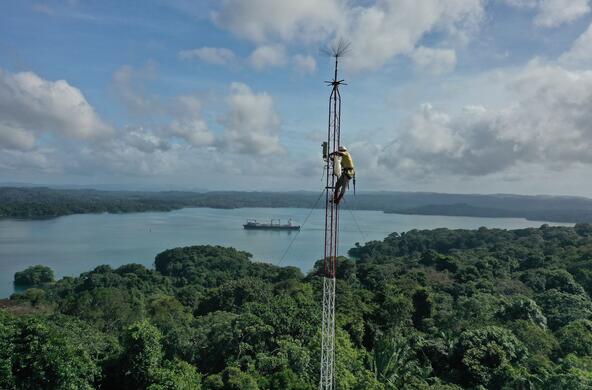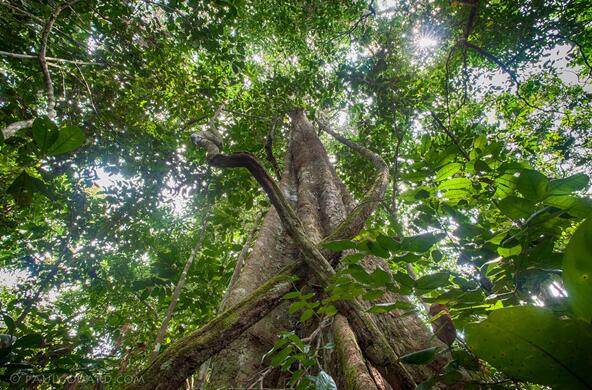
Our recent work has shown that lightning has significant consequences in tropical forests — by disproportionately killing the largest trees, it has an outsized influence on carbon storage and biodiversity. With lightning on the rise due to climate change, understanding the effects of lighting will be critical to managing and regrowing tropical forests in a way that maximizes carbon storage and forest health.
However, lightning has only been comprehensively studied in a single mature forest, and we do not know if it is similarly important elsewhere. Now, with funding from the National Science Foundation’s Directorate for Biological Sciences, we will explore how lightning alters many types of forests — including younger (secondary) forests, mangroves, and different types of mature forest in Panama.

While people tend to think of lightning strikes as explosive, fiery events that impact a single tree, this does not happen in dense tropical forests. Instead, the electricity from lightning easily travels among neighboring trees. A typical strike damages 23.6 trees, on average, approximately 6 of which will die within a year.
It is possible that lightning strikes have a significant effect on younger forests. Smaller trees are less likely to survive the damage of a strike, and the trees in younger forests are more densely packed and more connected by woody vines, making it easier for electrical current to spread.
Similarly, lightning could have particularly severe effects in coastal mangroves because mangroves are typically inundated with water and the trees are similar in height, which allows their branches to be more interconnected — both factors that could amplify the effects of lightning. Understanding these effects is important because mangroves are a key ecosystem for carbon storage that supports a tremendous amount of plant and animal diversity.

Our project will combine expertise in forest ecology, lightning physics, and remote sensing to answer three core questions:
- How does lightning affect forest recovery?
- How do lightning disturbances vary with forest age, size, and tree species composition?
- How do lightning strikes regulate regional differences in forest structure and carbon dynamics?
In addition to testing the hypothesis that lightning shapes forest structure, turnover rates, and carbon storage, we will also explore whether lightning strikes can be monitored with satellite imagery.
Very little is known about the ecological effects of lightning because lightning is hard to study due to its short duration and unpredictable location. It can also be hard to locate lightning-damaged trees when traveling by foot through the jungle.
Our project overcomes these challenges by setting up a state-of-the-art network of sensors to track every single lightning strike that hits central Panama (an area of about 8,000 square kilometers). It is the only system of its kind being used for this type of work. We expect it will capture an unprecedented 120,000 lightning strikes during the three-year study — more than 1,000 times as many strikes as any other previous ecology study.

After a strike is detected, we can use drones to locate the specific trees that were struck, and then send an on-the-ground team to collect data on the extent of the damage and how it differs with forest age, composition, size structure, and electrical characteristics. We will perform these evaluations at 50 lightning strike locations in each of five different forest types across central Panama.
This project will also explore how patches of forest damaged by lightning recover from this damage, and compare those recovery patterns to wind-damaged areas. At each site we will monitor how composition, patterns of biomass recovery, and available sunlight (which plants use to grow) vary over 10 years after the disturbance. We suspect that, compared to gaps created by wind, lightning-created gaps may not accumulate new biomass as quickly, meaning they won’t be as effective at capturing and storing carbon.
Regrowing tropical forests is one of our best tools to remove excess carbon from the atmosphere. Understanding how lightning will impact this regeneration will help us to better understand the global carbon budget, and will inform forest managers on how to plant more resilient forests that capture and store carbon far into the future.
- Publications
Funding






